All Science
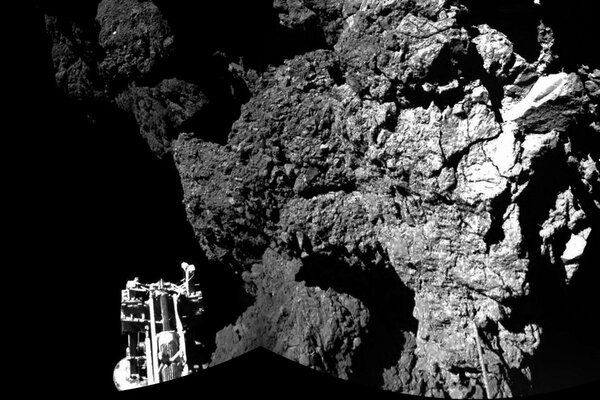 The ExplainerWhat did Philae learn in its first 57 hours on the comet?
The ExplainerWhat did Philae learn in its first 57 hours on the comet?For 57 hours in mid November, a squat lander with spindly legs made history as the first spacecraft to visit the nucleus of a comet – sending a wealth of information on the object to solar-system scientists back on Earth.
 Why are all these starfish suddenly turning into goo?
Why are all these starfish suddenly turning into goo?Marine ecologists have been witnessing mass mortality of starfish along the Northeast Pacific coast, and a team of scientists now believes they have identified the degenerative disease behind their deaths.
 Can we clone a woolly mammoth? Should we?
Can we clone a woolly mammoth? Should we?A woolly mammoth discovered in Siberia in 2013 might contain enough DNA to make it possible to clone the extinct animal.
 Scientists 'confident' comet lander will wake up
Scientists 'confident' comet lander will wake upThe Philae lander is expected to wake up once it nears the sun, scientists involved in the project believe.
 Liquid water once flowed on Mars – but only episodically, study suggests
Liquid water once flowed on Mars – but only episodically, study suggestsVolcanic eruptions on Mars may have triggered the climate conditions that allowed liquid water to pool on the Red Planet early in its history, according to a new study published Sunday.
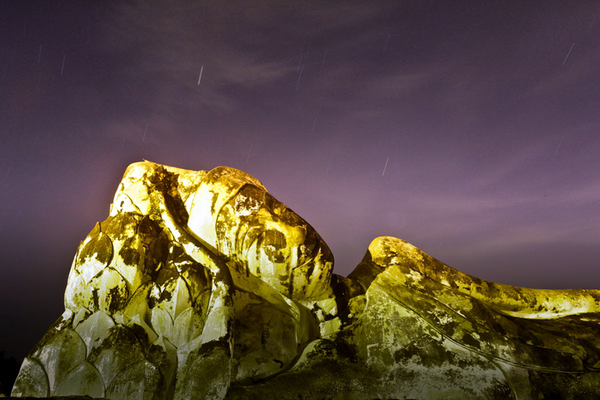 Leonid meteor shower to peak Tuesday morning: What to expect
Leonid meteor shower to peak Tuesday morning: What to expectIf you plan to brave the chill of a mid-November morning, and the prospects of catching a glimpse of only a few Leonids, you should get an award for perseverance.
- Philae, now silent, was an 'incredible scientific success'
The European Space Agency's Philae lander has ended its brief, historic mission to the surface of a comet, giving scientists an unprecedented look at the structure and composition of a comet's nucleus.
- Philae still silent, as scientists wait and wonder
Philae was moved Friday so that solar panels could recharge the depleted batteries. But on Saturday, there was still no communication with the comet lander.
 Could Cape Cod become cod-free? Google seeks to curb overfishing.
Could Cape Cod become cod-free? Google seeks to curb overfishing.On Thursday, NOAA abruptly cut short the fishing season for Atlantic cod, which has experienced severe population decline in recent years. That same day, Google Earth Outreach and two partner organizations released a prototype of a new online platform to track overfishing.
 Rosetta's Philae lander races against time as battery life dwindles
Rosetta's Philae lander races against time as battery life dwindlesPhilae appears to have landed in the shadow of a rock, rendering its solar panels at least temporarily useless in terms of recharging the lander's batteries.
 Will a warmer climate mean more lightning? Yes, say scientists.
Will a warmer climate mean more lightning? Yes, say scientists.Using a mathematical formula and basic physics, scientists have shown that for every degree Fahrenheit the globe warms, there will be a 7 percent increase in lightning strikes.
 Philae fashion faux pas: Rosetta scientist apologizes for offensive shirt
Philae fashion faux pas: Rosetta scientist apologizes for offensive shirtRosetta scientist Matt Taylor chose a bowling shirt covered in buxom leather-clad babes to update the world on the first-ever comet landing. Women in the scientific community were not amused.
 Baby elephant 'Hercules' perseveres in face of 14-lion attack
Baby elephant 'Hercules' perseveres in face of 14-lion attackGuests on a game drive in Zambia captured on camera one elephant's battle to survive an attack by more than a dozen lionesses.
 Rosetta's Philae landed on edge of precipice
Rosetta's Philae landed on edge of precipiceThe little lander that could bounced twice before settling in the shadow of a rock. Despite thruster problems, Philae landed upright and is transmitting data to the European Space Agency.
 Rosetta's Philae completes historic landing, but fails to anchor to comet
Rosetta's Philae completes historic landing, but fails to anchor to cometWednesday saw a historic space-exploration first: the soft landing of an experiment-laden package – Philae – on a comet. But then the news came that the lander had failed to anchor its harpoon to the comet.
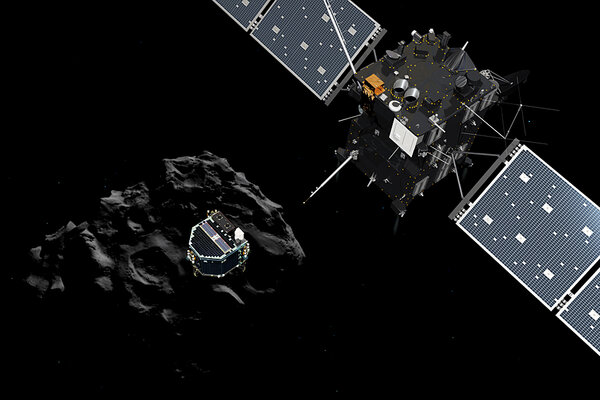 Will Philae successfully land on comet? Thruster trouble heightens drama.
Will Philae successfully land on comet? Thruster trouble heightens drama.The European Space Agency's Rosetta comet orbiter released Philae at 3:35 a.m. ET Wednesday for a painstakingly slow descent to the comet. Touchdown is expected to occur some seven hours later.
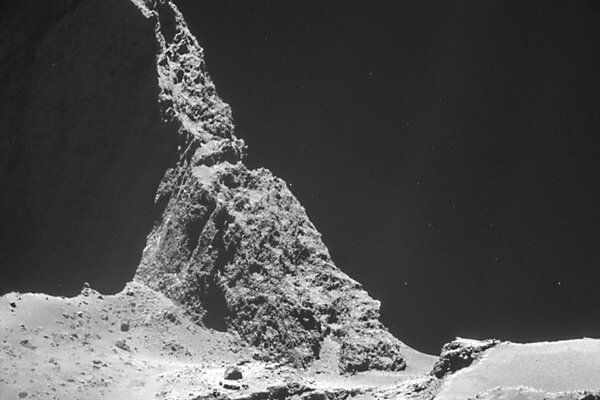 How spacecraft chased a comet 300 million miles, and is poised for a landing
How spacecraft chased a comet 300 million miles, and is poised for a landingOn Wednesday, the European Space Agency's Rosetta mission will try for a first-ever landing of a spacecraft on a comet. The comet in question, 67P, is shaped a little like a rubber ducky and is traveling at speeds greater than 34,000 miles per hour.
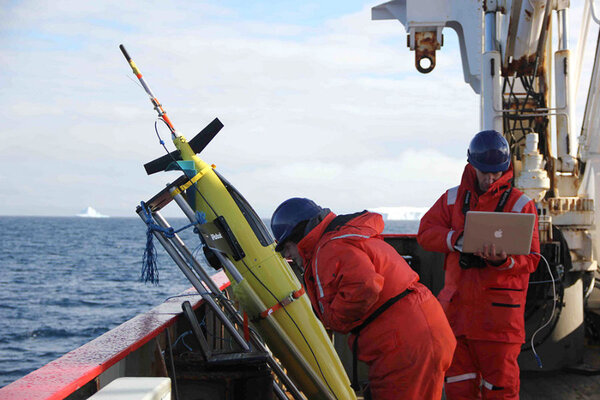 Underwater robot 'dolphins' offer clues to Antarctic melt
Underwater robot 'dolphins' offer clues to Antarctic meltWarm waters are melting Antarctica's ice sheet at an unprecedented rate, but scientists have been unsure how such warm water is finding its way to one of the coldest regions of the planet. Until now.
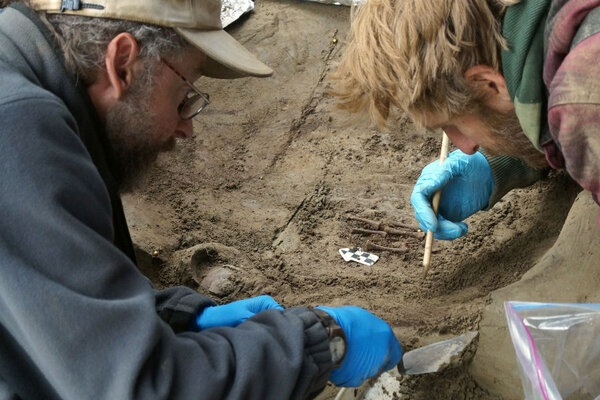 Ice Age infant burial ground offers clues to life for early Arctic settlers
Ice Age infant burial ground offers clues to life for early Arctic settlersResearchers say that the skeletons, which are approximately 11,500 years old, are the earliest known human remains from the North American subarctic.
 Hawaii lava flow update: Lava incinerates home on Hawaii's Big Island
Hawaii lava flow update: Lava incinerates home on Hawaii's Big IslandUpdate: Lava from Hawaii's Pu'u O'o vent has flowed 13.5 miles since June 27, finally engulfing a house on Monday. Until this week, no Hawaiian homes had been lost to lava since 2012.



















